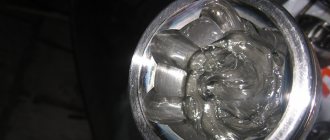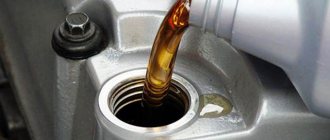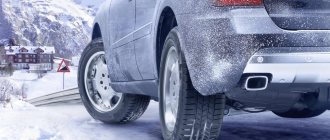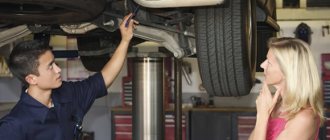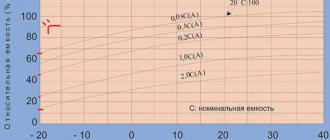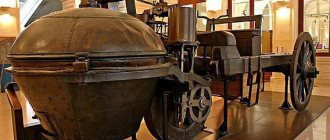What you need to know when purchasing a vehicle: rules and regulations
The first thing that is good for someone new to buying a car to understand is not to rush. It’s nice to quickly finish all the formalities, get into the car you like and press the pedal to the limit, but not all people can adequately assess the condition of the vehicle and explain why they chose this option.
A spontaneous decision can cost you serious problems both financially and when communicating with law enforcement agencies. All aspects of the purchase are regulated by Chapter 30 of the Civil Code of the Russian Federation “Purchase and Sale”, as well as by Decree of the Government of the Russian Federation dated January 19, 1998 N 55, Chapter 6 “Features of the sale of cars, motorcycles, trailers and numbered units.”
Preparation of documents when buying a car by hand
In an ideal situation, funds for the car are transferred to the seller only after all documents are completed.
Briefly, the algorithm for the ideal purchase of a used car is as follows:
- Search for the required car model.
- Checking the car against existing databases for prohibited registration, being in collateral, as well as criminal history.
- Evaluation of the purchase during a conversation with the seller, checking documents.
- Inspection of the technical condition of the vehicle. Sales.
- Concluding a purchase and sale agreement and registering ownership of the car with the traffic police.
- Transfer of money.
But this is ideal, but in reality, as a rule, the above 5 and 6 points are swapped. That is, the new owner pays the seller and then goes to the traffic police to register the car. Only here will the new car owner be able to make sure that the car is not subject to a registration ban. This sequence is one of the most common.
And there is nothing wrong with it, because the purchase and sale agreement contains a clause that states the absence of these encumbrances. However, if the car is subject to various kinds of prohibitions and restrictions and the new owner finds out about this only at the traffic police after registering the car, then he will face a lengthy process of returning the money.
If the result of the check is positive, all that remains is to document the fact of purchasing the car. This can be done by concluding a purchase and sale agreement.
Copies of the agreement must be drawn up in 6 copies, three copies each for the seller and the buyer. At the same time, each of them must be signed by both the seller and the buyer. Then all parties to the agreement make entries in the vehicle passport: the buyer puts a signature in the “owner’s data” paragraph, the seller performs an identical procedure in the paragraph called “previous owner’s signature.”
1. All sets of keys (in most cases there are two).
2. Vehicle STS.
3. PTS of the car with all the above signatures.
4. Diagnostic card.
5. Signed agreement in triplicate.
After this, you can pay the seller the entire agreed amount. Payment is made only when there is no agreement to transfer money only after completing the procedure for re-registration of the car with the traffic police.
Step-by-step instructions: how to properly purchase a car?
The following describes in detail the procedure for future buyers. Find out how the transaction is carried out and executed correctly.
Car selection
Deciding on the choice of vehicle is not an easy task. Open the catalog of any dealer and hundreds of different brands and models will immediately catch your eye, and after a few minutes your head will begin to hurt. How to make the right choice:
- Outline the circle of your daily needs and only then start making a choice. Agree, it’s quite strange to buy a convertible if you live in a village, and one half of the year there is snow in the yard, and the other half it’s raining. Are all your trips home, work, supermarket? Or sometimes you go to the dacha, and the trip there is a separate adventure? A lot depends on the operating conditions: the type of body, the gearbox, and the drive.
- It is also important how much you are willing to spend on it. Not everyone can afford a beautiful and expensive car, and an inexperienced buyer risks driving himself into a hole of debt for the sake of a sparkling but heavy iron horse. But the cost of transport is not limited only to the purchase of the car itself - maintenance will also cost a pretty penny.
- Capacity – if you have a large family, then think about this. Or do you have to transport a lot of cargo? Then you need to choose a completely different car.
- Choosing a car brand is all very individual. Some people are chasing image, some are loyal to their favorite manufacturer, and some are thinking about maintaining their vehicles.
- What's under the hood and how much will you have to pay for it? Consider fuel consumption, acceleration dynamics and the amount of transport tax.
- Whether the car is equipped with airbags, pre-tensioning seat belts, a collision avoidance system or a reinforced body, everything that concerns the safety of the driver and his passengers should be of primary concern.
- Many note the presence of additional functions: stereo system, cruise control, air conditioning and others. Driving in comfort is not a sin, but think about the means.
Most likely, you will have to compromise with your desires and your wallet. Some things can be discarded, but others will have to be included in the mandatory equipment of the car. Make a list and note what is most important to you: use your head first.
How does the search for a seller or salon take place, what to consider?
Finding a seller can be a serious and lengthy stage; you need to take into account all the nuances.
- You can independently travel to the nearest car dealerships or visit car markets in neighboring cities, if there is more choice there.
- Separate private car dealerships from official dealers - the difference is both in price and in the likelihood of buying a “pig in a poke.”
- Monitor local TV channels, radio or newspapers - sometimes there are good advertisements there.
- Walk more around the city on foot and look around - you may come across advertisements on stands or on the windows of the cars themselves.
- In garage cooperatives you can also find out if anyone is selling a car.
- The most popular and easiest search is via the Internet on the Avito.ru sites. Droom.ru, Auto.ru and others.
The popularity of Internet search is also its main disadvantage - a large number of scammers always flock to the largest and most popular sites.
Finding a car, checking it and completing paperwork is described here.
Checking legal purity
Legal purity is a check:
- car documents;
- operating history;
- availability of repairs;
- participation in road accidents, etc.
You need to check this so that you don’t end up without money and without a purchase if in a month it turns out that the car is wanted, pledged to the bank, etc. And then litigation and years of ordeal. You can check the cleanliness yourself using the Autocode service or on the official website of the traffic police, spending 300-500 rubles, or contact an expert bureau for 2,500 rubles. In the second case, the check is more reliable, but not everyone can afford it.
It is better to combine several services. It may happen that on one you will not find a car at all, but on another you will discover a “rich” history of violations and resales behind it.
To start checking, ask the owner for his passport details, title, car number, engine number, VIN.
If the seller refuses to provide you with all the necessary information, then it is better to refuse the purchase. There is a risk that he has something to hide.
Checking legal purity and other important parameters when purchasing a used vehicle is described here.
Negotiation
Arrange for the private seller to have his passport and all documents for the car at hand:
- PTS;
- STS;
- diagnostic card;
- service book (if available);
- driver's license.
It's a good idea to invite a knowledgeable friend who can help you with the inspection.
Be wary if the seller himself took a couple of people with him and made an appointment in some remote place - they may begin to put pressure on you. And be sure to insist on a test drive. It’s better not to take the car without checking the dynamics.
Pay attention to the owner himself: ask about the history of the car and keep an eye on him - if he has something to hide, then he will be betrayed by an inadequate reaction to questions about problems or participation in an accident, the absence of any documents, he may begin to get confused in answers, nervously laugh and sweat a lot.
Read about all the intricacies of negotiations when buying a car here.
Vehicle check
Only inspect the vehicle yourself if you know what you are doing . Beginners have a direct route to the service center. If the seller immediately waves his hands when asked about checking by a specialist, turn around and leave. Remember that there are no used cars without flaws. It is unlikely that immediately after leaving the dealership it was put in the garage and forgotten for a couple of years. The seller must be honest about the shortcomings.
Then start watching:
- Inspecting the body:
- Is the paint factory?
- We check how the trunk, doors, and hood open, and whether the gaps between the connections are uniform.
- We evaluate the strength of the bumper and lockers on the fender liners, whether there is any deformation at the point of contact between the bumper and the wing.
- Brake discs must be smooth, shiny, and free of rust.
- Engine:
- We inspect the condition of the bolts of the wing fastenings, headlights, “TV”, air intake, measure the oil level - it should be transparent and red.
- The engine should be moderately clean, free of carbon deposits.
- The coolant is at a level between minimum and maximum.
- The service belt bends half a revolution in the middle part; Tears, cracks and cuts are not allowed.
- Salon:
- We evaluate the condition of the upholstery, driver's seats, and dashboard.
- Turn on the ignition - all the lights should light up/go out in due time.
- We check all electronics and equipment: mirrors, power windows, air conditioning, windshield wipers, lights, heated seats, audio system.
Take a sniff to see if there is a smell of gasoline in the cabin! - We carry out a test drive:
- First, warm up the car and listen to the engine idling to see if there are any suspicious sounds.
- We check the color of the exhaust: everything is fine if it is pale gray.
- Check how the clutch moves (if you have a manual) and move away.
- The gearbox test is individual for each type. General advice - listen to how the gears are changed - whether there are any unnecessary pops, jerks, or impacts. Try changing gears while accelerating, stopping, braking, cruising and coasting. The automatic works smoothly, the mechanics should not require extra effort.
Read about the inspection, assessment of technical condition and test drive of a vehicle upon purchase in this material.
Price negotiation or bidding
If no critical flaws are found, we begin to negotiate a price. We use faults and moments that confuse you as an argument to reduce the price. You shouldn’t be impudent either, but don’t let the seller dictate terms to you. Once you have found the middle ground, you can move on to the next stage.
The seller may require a deposit. Agree if the offer is very good or the deposit ranges from 2 to 20 thousand rubles. If the seller demands more, then this is a reason to doubt his intentions.
We talked about bidding when buying a car and different options for saving here.
Preparation of documents and transfer of the purchased car
People often ask what documents are needed when registering a vehicle purchased at a dealership or from a private person, whether, for example, a driver’s license is needed. The purchase and sale agreement does not have a strictly established form, but any agreement must contain information about the parties to the transaction, information about the object of sale itself and detailed conditions. Before buying a car second hand, read the contents of the contract to protect yourself from surprises.
To purchase a car from a private seller you will need:
- passports and SNILS of both parties;
- PTS;
- registration certificate (if the car is registered);
- MTPL insurance;
- diagnostic card;
- PrEP.
The main document is the purchase and sale agreement (SPA) and often this alone is enough to buy a car. It comes into force immediately as soon as the parties put their signatures. It would be nice to have a few more papers with it:
- Acceptance and transfer certificate – provides additional information about the car, records the date and place of transfer of the vehicle from the seller to the buyer.
- PTS – fill in the appropriate fields about the transaction and the parties. PTS must be required. If the seller doesn’t have it, then turn around and leave.
- A financial receipt is evidence of the transfer of money. It can help in controversial cases.
Save all documents until better times.
In the salon you will need:
- passport;
- SNILS;
- driving license for a car;
- application for compulsory motor liability insurance (on the insurer’s form);
- PTS;
- PrEP.
After the purchase is completed and you pay for the car and insurance, you will be given:
- sales receipt for the car;
- OSAGO payment receipt;
- a copy of the insurance contract and policy;
- insurance certificate;
- PTS;
- transit numbers;
- warranty book with coupons;
- operating instructions.
Everything about the procedure for purchasing a car in a showroom is described here, about the methods of buying a car in a showroom and a used vehicle from an official dealer, and about other nuances, read here.
Not all of us can afford to buy a new car from a dealership. Expensive, and in the case of domestic brands, it also requires additional costs for “bringing it to fruition.” It is much easier to buy a used car at the car market or through an ad in a newspaper or on the Internet; fortunately, the secondary market is thriving, and the choice of models can satisfy any needs. However, despite all the external well-being, the buyer faces many dangers: from “hidden defects” of the iron horse that come out immediately after its purchase, to fraud with documents and numbers. Therefore, it is advisable to thoroughly prepare for a responsible purchase. General rules It’s worth mentioning right away that we will not discuss the technical side of choosing a car, leaving this to professional auto mechanics. Our task is to teach you how to work with “papers” without resorting to the help of lawyers and all kinds of advisors.
The legal purity of documents for a car is as important a part of the transaction as its technical condition. Moreover, if the breakdowns can be eliminated, then correcting the documents is difficult and sometimes impossible. As a result, the joy of the purchase can be replaced by headaches, loss of time, money and, possibly, the car itself.
So, after you have examined the car inside and out, checked everything you can, and seem to be ready to shake hands, ask the seller for documents for the car: vehicle passport (PTS), registration certificate, if the car has not been removed from registration, and a vehicle inspection ticket, even if it is expired.
The PTS will allow you to trace the entire chain of sellers and buyers of the car. If they show you a PTS marked duplicate and assure you that the car had one owner, then the chances that you are being deceived are 99%. Usually this document is kept at home and brought out into the light of day twice during the entire period of ownership: when registering the car and deregistering it. It is difficult to lose a PTS, so a duplicate document should alert you. If you absolutely want to purchase this particular car, but are confused by the title, then for a fee you can find out the real fate of your future purchase through various intermediaries at the registration offices of the traffic police. Find out if the car is missing from the search database and determine the true number of previous owners. There are no other ways to find out the true state of affairs, since neither the Rules for Registration of Vehicles (Vehicles) nor the Administrative Regulations for performing the function of registering a vehicle provide for the provision of such information to citizens for a fee or free of charge.
Next, you need to check the body and engine numbers with the numbers in the PTS. If any of these elements have changed, a corresponding mark in the PTS is necessary - otherwise problems may arise when registering the car. All defects in the rooms must also be reflected in the inspection report of the expert institution.
Particular caution must be exercised if a citizen is selling a car on behalf of the owner by proxy. By the time of sale, the power of attorney may expire due to its revocation from the attorney, or the death of the principal. If the attorney was not properly notified of changes in his status, then nothing threatens the transaction from this side, however, if the attorney was aware of the termination of the power of attorney and, despite this, he nevertheless concluded the transaction, then the principal or his heirs may file a lawsuit to declare such a transaction invalid due to its non-compliance with the law (Article 168 of the Civil Code of the Russian Federation). As a result, the car will return to the previous owner, and you will have to extort money from the “seller,” since the owner will probably say that he never saw any money. In accordance with Art. 183 of the Civil Code of the Russian Federation will be considered that the transaction was completed by the attorney on his own behalf, and not on behalf of the owner and, accordingly, all claims must be addressed to him.
Almost the same problems lie in wait when “buying a car by proxy.” By purchasing a car in this way, you do not become its owner, and registering a car in your name with the traffic police is nothing more than a procedure for allowing the car to participate in road traffic, and not a confirmation of your ownership. In this regard, it is necessary to remember that at any time you can be left without a car: either the principal revokes the power of attorney, or the car as property will be seized for the obligations of the principal, or the power of attorney will be canceled by the heirs of the principal in the event of his death.
In order to avoid such troubles, take the trouble to go to the notary together with the seller, acting under a power of attorney (without him, the notary will not talk to you about this topic) and clarify his powers. Sellers with powers of attorney from other regions, as well as holders of handwritten powers of attorney, should be ignored by you in any case, no matter how tempting their offers may seem.
Separately about foreign cars For foreign cars, in addition to all of the above, it is necessary to check the legality of import into the territory of the Russian Federation and its subsequent sale. The absence of receipt receipts from customs, notes in the PTS about the ban on alienation, or temporary registration in the certificate (registration passport) indicate the temporary stay of the car in the country, which implies the owner’s obligation to take it back, or change the customs regime of the vehicle with the obligation to pay everything applicable fees and charges. Failure to comply with these conditions entails consequences for the new owner in your person in the form of refusal to register the vehicle, or seizure of the vehicle until complete customs clearance and payment of all required payments, which can cost you a pretty penny.
Competently completing the transaction There are two options for this:
- Concluding a purchase and sale agreement in simple written form, or with notarization;
- Purchase and sale through a consignment store with the issuance of an invoice.
To register your purchase, it is enough to conclude a contract in simple written form. It is not at all necessary to contact a notary. However, the registration departments of the State Traffic Safety Inspectorate have their own interpretation of the Administrative Regulations for performing the function of registering a vehicle, especially paragraph 16. Depending on his mood and education, the registrar can:
- Demand to present the seller, so to speak, “live”, to make sure that the documents are not stolen and the owner’s signature on the contract is not forged.
- Demand to provide a notarized contract, citing the fact that “this is required by law.” True, which one will probably not be specified.
- Require an invoice, since you are used to working only with them, and perhaps have a percentage of their “sales”.
All these demands are absolutely illegal and are grounds for filing a complaint with the court and the prosecutor’s office, but you can try to get by with a little blood.
A conversation with the head of the registration department often gives a positive result, especially when the very complaint that you are going to send to the court comes to his desk. I don’t want to spoil anyone’s performance, so it’s easier for a boss to say a few words to his subordinate than to later justify himself to senior management. You can enter into an agreement with a notary public if you are not sure about the seller or because of your inner convictions. There is no harm from this, but it will entail some financial costs, which, as a rule, are distributed equally between the parties. It should be remembered that a notary only certifies the signatures of the parties to the agreement, and does not check the “purity” of the transaction and is not its guarantor.
Registration of a reference invoice is also one of the ways to spend extra money. True, traffic police officers treat this document with more confidence than the contract. The essence of receiving it is this: the seller supposedly hands over the car to a consignment store for sale, and you supposedly buy it from this store. In fact, it is enough to go to any booth you like with the inscription “invoice certificates”, located directly at the registration departments of the traffic police, where they will “sell” you a car for about 1000 rubles in five minutes.
And yet, it is advisable to indicate the entire transaction amount in contracts and invoices, despite the temptation to save on taxes. In the event of a trial, the court will consider the amount specified in the contract, and not the one you agreed on in words.
Once all the necessary formalities have been resolved, you can register your purchase.
Payment Methods
The car can be paid for at the dealership in several ways:
- The amount can be deposited either in cash or by bank transfer.
- Advance payment if the required model is not available. The entire amount is paid when the car is delivered.
- You can get a car loan. In this case, you will have to apply for both MTPL and Casco insurance (for the bank).
- Or buy in installments.
You can use maternity capital, but keep in mind that the circle of sellers, car dealerships and cars will narrow significantly. You need to look for those who will work on a cashless basis. Of course, it will become almost impossible to buy a car second hand.
Everything about paying for the purchase of a car and checking funds when selling is described here.
The process of buying a car second hand 2020 step by step instructions
The buyer writes and signs, deposits the required amount, and the parties agree on the time of signing the main contract and payment of the remaining amount. When drawing up a contract, the seller indicates an amount greater than the agreed amount.
True, car enthusiasts still conclude some transactions with a notary, seeing this as additional guarantees. But practice shows that this is unnecessary trouble. Documents required to complete a vehicle purchase and sale transaction: Passports of the buyer and seller.
Practical advice on the procedure
- Don't go too cheap when buying a car. The money invested wisely will count towards you in a future sale, in repairs, and on the road.
- If you buy a car at a dealership, know that the manager’s main goal is to force you to buy the most expensive analogue, so when asked “how much do you expect,” name the lowest price or ask for a price list.
- Don't overpay for additional options. They can “eat up” a significant part of the price, but you still won’t use them.
- Do not buy an additional 1-3 year warranty at the salon. With proper operation, repairs will be required much later, and money will go down the drain.
What and where is it more profitable to buy: a new vehicle in a showroom, a used one from a private person and other options
All options have advantages and disadvantages. Let's look at them:
- It makes sense to buy it from your own hands if you are on a tight budget. At a car dealership, prices are usually much higher.
- The advantage of private individuals is also their main disadvantage - the low price can be caused by technical problems, which an honest seller will immediately tell you about. This does not mean that a car from a showroom is guaranteed to be perfect, but the chance of buying a high-quality vehicle from a showroom is disproportionately higher, especially if the buyer does not understand its structure and does not know what to look for first.
- You will have to buy at a showroom at a fixed price, but when buying secondhand you can bargain, especially if you find technical problems.
- When purchasing from private individuals, you can check the history and technical condition of the car (it is better to do this at a service center). At a car dealership, they won’t let you check the condition with a third-party expert, saying that it has already undergone all the necessary maintenance.
- The secondary car market is replete with scammers - there is a high probability that you will simply be deceived and you will purchase a broken vehicle or one that is completely stolen. In the salon (preferably at an official dealer), they will definitely check the legal purity before registration.
- Turning to private traders is a big waste of time and effort. Sometimes you will have to look through hundreds of advertisements and make dozens of trips to different parts of the district or region, and there is no guarantee that everything will go smoothly. In the salon, you can examine a huge number of options at one time.
Is it worth taking a car from an auction?
Buying at auction is an option for people who are short on funds, because a car can go under the hammer at a 50% discount. The owners of such auctions claim that the cars here always correspond to the description.
They explain this by saying that the seller is interested in a successful transaction, since he will use the proceeds to pay creditors. This can be beneficial given the prevalence of fraud in the secondary market. But this does not mean that you can trust everyone without evidence.
The history of the car and its condition will have to be checked in any case. Bidding also has pitfalls - the car is often under arrest due to debts, and after the purchase you will have to meet with a bailiff and go to court.
Purchasing a new vehicle
Sales managers at car dealerships use many tricks to sell a buyer a more expensive car. And we will tell you how to behave with sellers in order to get exactly what you originally wanted.
We talked in detail about ways to profitably buy a new car in Russia here.
Price selection
The Russian car market is not flexible, but it is really possible to “bring down” the price in such a simple way. Before introducing the buyer to the options, the dealer will definitely ask about what budget the client is counting on, what cost of servicing the car will suit him, and so on.
These questions should be answered either vaguely - in the style of “I want the lowest price you can offer”, or with knowledge of the matter, naming the cost below the actual one. It would be a good idea to first read booklets and look at salon websites to form an opinion about the pricing policy for the model you are interested in. When communicating with a dealer, name the amount 10-20% less than the actual amount and look at his reaction - perhaps they will offer you promotions and discounts.
Another advantage of this tactic is that the buyer will ultimately be able to stay within the budget, because the final cost will still increase.
Additional options
Let's return to the point where we advised you to think carefully about the options that the buyer will and will not need. It's time to sort them out and refuse additional, expensive and completely unnecessary services. The best option is to take a car in the basic configuration ; everything else, if necessary (and this is a key circumstance), can be purchased later.
Additional warranty
An additional warranty linked to an official dealer is a way to make money from customers; you should not fall for this offer. The game is not worth the candle, to put it simply. The chances that during the specified period (and an additional warranty is usually sold for 1-3 years) something will happen to the car are extremely small, and you will have to pay in any case. It’s better to find a normal service station and go there only after the fact - if something happens.
Who should I discuss details with?
A sales manager is a person responsible for a transaction . It is from him that the buyer can ask anything regarding the agreement, contract, services, car equipment, and so on. If someone else is talking to the client in the salon, then something is wrong. In Russia, it is the sales manager who must accompany the client at all stages of the transaction.
Based on this, one more piece of advice should be given to buyers - take into account only the information that the manager told you or confirmed. It is better to ask him again whether the promotion indicated on the leaflet or on the Internet is valid.
Market research before visiting the salon
To communicate competently with the manager and understand the level of markup on cars in a particular dealership, it is advisable to first familiarize yourself with the vehicle market. A client who knows what he wants, knows the prices and can name a package that will suit him, is much more difficult to impose something unnecessary. A manager trying to convince you will have to use more compelling arguments than “this car is better.”
Perhaps there will be promotional offers and discounts, but if not, the client will not lose anything and will be able to buy what he wants.
What should we do next?
When everything is settled with the papers, the seller receives money for the car in exchange for the keys. You also get:
- your copy of the policy;
- act of acceptance and transfer;
- service book;
- PTS.
In the salon, after payment, signing the contract and act, the seller gives you:
- contract;
- Act;
- keys;
- payment documents;
- PTS.
If you do not have a valid diagnostic card, then go to the nearest service station for a technical inspection. Without it, you will not receive an MTPL policy.
It would be better to check the technical condition of the car before purchasing at special inspection points.
You can find out everything about diagnosing a used car before purchasing here.
To apply for compulsory motor liability insurance you will need:
- Your passport;
- PTS;
- diagnostic card with a fresh mark;
- driver's license;
- a correctly completed application from the insurance company.
You can apply for compulsory motor liability insurance at any insurance company of your choice.
PTS is the main passport of the car, where technical data is entered, as well as the history of its origin and sales. In the PTS you need to enter information in several columns:
- FULL NAME;
- registration address of the new owner;
- date of sale of the car;
- data on the policy (name and date of conclusion);
- signatures of the parties.
As soon as we have received all the documents and taken out insurance, the car must be registered with the local traffic police department. You have 10 days after purchase to do this, even if you do not have the numbers. Read about the consequences of driving without license plates after purchasing a car and how to drive legally here.
At the traffic police you will need:
- statement;
- passport;
- PTS;
- PrEP;
- state registration plate (if any);
- copy of OSAGO.
A representative of the State Traffic Inspectorate will inspect your car and, if everything is normal, you will be given a vehicle registration certificate and license plates, if necessary.
Find out about passing a technical inspection, registering for compulsory motor liability insurance, registering with the MREO and further checking the technical condition of the car here.
How to register a car sale under the new rules in 2020
During the process of re-registration of the car, the traffic police officer will inspect it, and the inspector will check the application. Then the new owner will receive the title back. The document will be stamped by the MREO. Additionally, a registration certificate and license plates are provided if they are renewed.
The real value of the vehicle is assessed by an expert. The purchase and sale agreement indicates the actual details of the transaction, and the new owner undertakes to register the vehicle within 10 days and subsequently report to the tax office if he decides to sell the car.
Process checklist
Let's briefly outline what we found out. When buying a car, the main thing is:
- Do not hurry.
- It is better to spend more time and make the right choice than to spontaneously buy the wrong thing.
- Choose a car based on your needs, not your immediate desires.
- Keep in mind all the pros and cons of buying secondhand and at a car dealership.
- Be careful with the seller.
- If you don’t have the knowledge, have the car inspected by a professional.
- Take it for a test drive.
- Make sure you are buying a legal car.
- Competently draw up a purchase agreement and fill out the PTS.
How to sell a car yourself in 2020 - step-by-step instructions
- the purchase and sale transaction was executed for a car that had been owned for more than 3 years;
- if the selling price of the car is less than the price at the time of purchase;
- the cost of the car sold was less than 250 thousand rubles.
We recommend reading: Amendments to the Criminal Code dated January 1, 2020 under Article 228
If the car was sold for more than it was purchased, the individual pays income tax based on the amount of benefit received. When selling a car, personal income tax is paid. The amount can be calculated using the formula: the tax deduction is subtracted from the sale price, and the resulting amount is multiplied by 13%. It must be paid within the year following the year of sale.
Pitfalls and ways to avoid them
Before you go to the dealership, check out reviews online . Stories about PTS delays, claims and other troubles are a common occurrence when it comes to third-party salons.
At a car dealership, you may be offered to buy a good car, but with additional features that cannot be removed - this is an additional burden on your wallet. If you come for a specific car on sale and are ready to pay, you may be informed that there are no exactly the same models now, but you can take a more expensive one from another lot. As you understand, this is a trick.
Chat with friends, acquaintances, or ask them to ask those who have already encountered problems when buying a car. Schedule a vehicle inspection in good weather to find and properly evaluate any deficiencies.
Checking machine history
Buying a car second hand is a seemingly simple procedure, but the transaction is fraught with many nuances and complications. After listening to the seller's answers, proceed to independently check the car's history. It is important to find out in advance, before the purchase and sale agreement is signed:
- are there any encumbrances on the vehicle;
- whether the old owner has any debts or fines;
- whether the car is the subject of collateral in the bank;
- whether he is on the wanted list, etc.
To check the car you want to buy secondhand, you don’t need to go to various authorities and structures, waste time in queues and conflicts. You can find out all the important information without leaving your home; all you need to do is have access to the Internet.
Legal purity
The buyer should be interested in the history of the vehicle. There should be no gaps or doubtful moments in it. Buying a car second-hand, and then finding out that it has legal problems, is quite dangerous, because you can be left without a car and without money. You can find out everything in advance if you adhere to a certain algorithm.
At the meeting between the seller and the buyer, it is necessary to copy documents or write out basic information from them. Then, on the FMS website, you should verify the owner’s passport. Then, using the traffic police portal or the FSSP online resource, you can find out about fines and unpaid debts, vehicle seizure and other encumbrances. The banki.ru portal will make it possible to track whether the car you want to buy second-hand is on credit.
Checking the compliance of data in documents when purchasing in person
You can buy a car second-hand, but you should not forget about precautions. When inspecting the car, you need to pay attention not only to the interior, tires, and absence of dents. It is imperative to check the data specified in the PTS and the actual markings. The information in the vehicle passport and the engine, body or chassis numbers must completely match.
The plates on which the markings are indicated are called nameplates. Make sure they are well secured and show no signs of deformation. Compare all documents for the car, they must be issued in the same name.
If the owner has a duplicate PTS
Sometimes the person from whom you decide to buy a car second-hand, during the inspection of the car, provides the buyer with a copy or duplicate of the title. This is unacceptable during a sale, and the transaction must be abandoned immediately. Despite how the seller explains the lack of a vehicle passport, you do not need to agree to a purchase without the original title; this trick is often used by scammers who resell stolen cars.
We recommend reading
How to quickly and correctly sell a car for maximum profit
However, even if the owner will provide you with the original PTS, there is no need to relax. Examine the document for reality. The main features by which a fake can be distinguished are the presence of a hologram, a three-dimensional watermark and a three-dimensional rosette on the back of the document. Worn and dirty documents should be checked more carefully.
Nuances and frequently asked questions
- Do you need a license when buying a car? You can buy a car without a license, since the contract does not stipulate the presence of a license, and the law does not prohibit owning a car without a driver’s license. But after the purchase you will have to find a driver to move the vehicle.
- Is there a difference in the procedure for purchasing a passenger car and a truck? There is no significant difference, except that you may need to register with the district military registration and enlistment office if it is an off-road truck.
- Does the seller have to deregister their vehicle before selling it? No, the registration procedure has been significantly simplified since 2013 and now, in order to sell a car, you do not need to deal with deregistration of the vehicle with the traffic police and obtain Transit license plates.
- Is it possible to keep the license plates of the previous owner of the car? Yes, if the previous owner does not take them, you are allowed to keep them and use them for their intended purpose. The main thing is to do everything correctly, as required, to re-register license plates for a car at the traffic police.
- Who will pay transport tax when buying or selling a car? Transport tax is paid for the entire month. Both the buyer and the seller will have to pay money for the month in which the transaction occurred.
- What will happen to the fines and who will have to pay them? If the previous owner collected fines, and you only found out about them at the traffic police department, then the old owner will have to pay them. There is a naive opinion that fines will “burn” if the car is sold - this is a myth.
Buying a car in any case is a very troublesome business. And it’s difficult to say where it’s definitely more profitable and better to buy: everywhere has its own nuances and subtleties. The main thing is to thoroughly prepare for a future transaction, and then not a single scammer will deceive you.
How to buy a car second hand
When drawing up a purchase and sale agreement and completing a transaction, you must carefully study all the documents and have them certified by a notary. This will allow you to completely protect yourself and protect yourself from scammers who carry out various scams with vehicles in order to make money.
Within 10 days from the date of concluding the purchase and sale agreement, you must undergo a technical inspection (if there is no diagnostic card), purchase a civil liability car insurance policy and register the vehicle in one of the departments of the State Traffic Inspectorate. Registration of a car is possible in another region, at its location.
We recommend reading: Law on Veterans of Military Service of the Russian Federation Benefits in 2020





